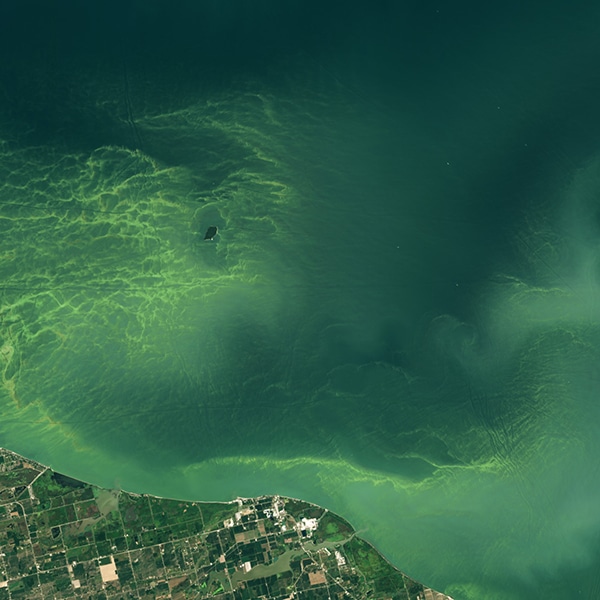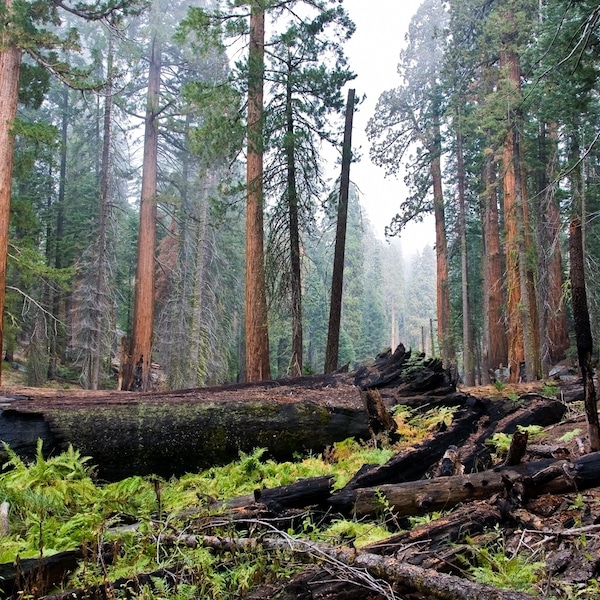
The Kutuk River in Gates of the Arctic National Park in Alaska. (Photo: Ken Hill / National Park Service)
Alaska is famous for its extensive, beautiful, and foreboding wilderness. Mountains, dense forests, and many miles of roaring rivers cover the state. Many areas are accessible only by helicopter or bush plane, particularly the more remote Arctic regions. While visiting one of the state's many remote rivers in 2018, scientist Jon O’Donnell was surprised to see the waters turned a murky, rusty orange. The great contrast to the crystal clear waters when he visited the year prior kicked off an investigation into why Alaska's rivers were turning orange. The findings, recently published in Nature Communications: Earth and Environment, suggest that the culprit is climate change. As the permafrost warms, metals and acids are polluting the rivers of the Arctic.
After noticing the one orange stream in 2018, scientists including O'Donnell and others from institutions such as the National Park Service, U.S. Geological Survey, and the University of California, Davis, began surveying rivers and sampling their water's contents. Satellite imagery suggested the changing river colors began as far back as 2008 and were visible from space. “The more we flew around, we started noticing more and more orange rivers and streams,” lead author Jon O’Donnell says in a statement. “There are certain sites that look almost like a milky orange juice. Those orange streams can be problematic both in terms of being toxic but might also prevent migration of fish to spawning areas.”
Testing the waters revealed iron, zinc, nickel, copper, and cadmium. The waters were often highly acidic, with pH closer to 2.3 as opposed to the normal 8. According to PhD student Taylor Evinger who helped analyze the samples, “We see a lot of different types of metals in these waters. One of the most dominant metals is iron. That’s what is causing the color change.” Tributaries which turn orange as the iron oxidizes acquire their rust color. They then feed into larger rivers, mixing with waters which still remain clear. “There’s a lot of implications,” O’Donnell added. “As the climate continues to warm, we would expect permafrost to continue to thaw and so wherever there are these types of minerals, there’s potential for streams to be turning orange and becoming degraded in terms of water quality.”
Permafrost melting and changing river water may have scary implications for drinking water and wildlife. The salmon populations in Alaska may be particularly affected. Permafrost can also release other long trapped things, such as ancient plant DNA or frozen viruses.
Climate change threatens to affect human life and the Earth's ecosystems in many ways, as scientists rush to learn how the changing world will affect humans and animals.
As climate change causes long-frozen permafrost to melt, acids and metals are released into Alaska's rivers, literally rusting them.

The Kutuk River in Alaska's Gates of the Arctic National Park. (Photo: Ken Hill/National Park Service)

The Kugaroruk River showing contrasting waters. (Photo: Josh Koch, U.S. Geological Survey)

A tributary of the Kugororuk River. (Photo: Josh Koch, U.S. Geological Survey)

The Anaktok River where clear and orange waters mix. (Photo: Josh Koch, U.S. Geological Survey)

A tributary of the Kugororuk River. (Photo: Josh Koch, U.S. Geological Survey)

The orange waters of the Kugaroruk River tributary meet clear. (Photo: Josh Koch, U.S. Geological Survey)

The Akillik River in Kobuk Valley National Park, Alaska turning orange. (Photo: fig. 4, O'Donnell et al.)
h/t: [Smithsonian Magazine, CNN]
Related Articles:
Number of Cyclists Now Outnumber Car Drivers in Paris
LEGO Experiment Shows How Well Different Sea Defense Structures Resist Coastal Erosion
Haunting Underwater Photos Show How Climate Change Impacts the South Pacific [Interview]
Eye-Opening Video Shows How Earth Could Look in 2050 if We Don’t Address Climate Change






















































































